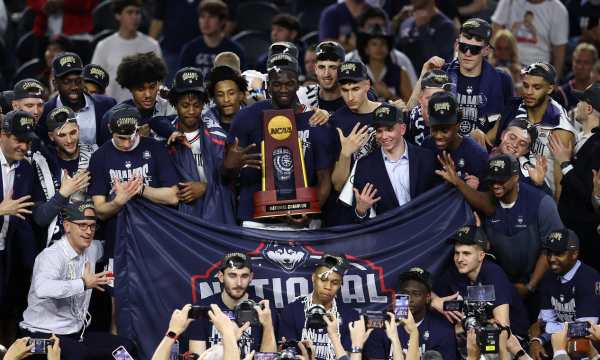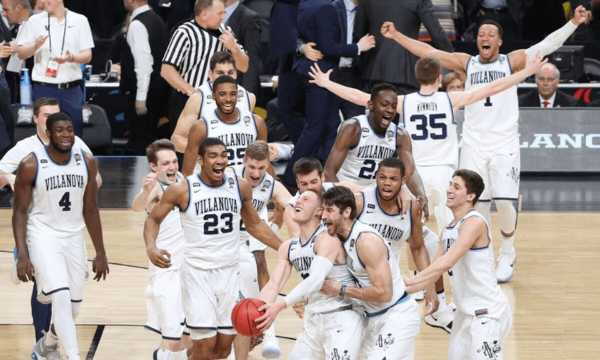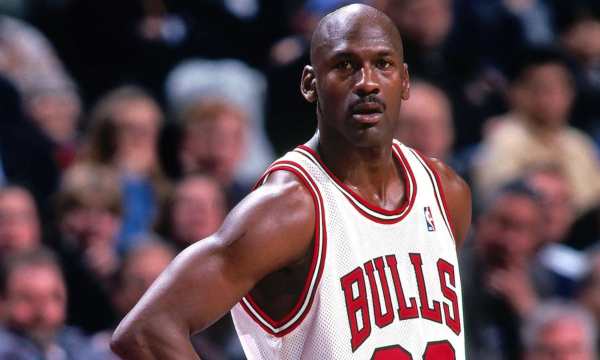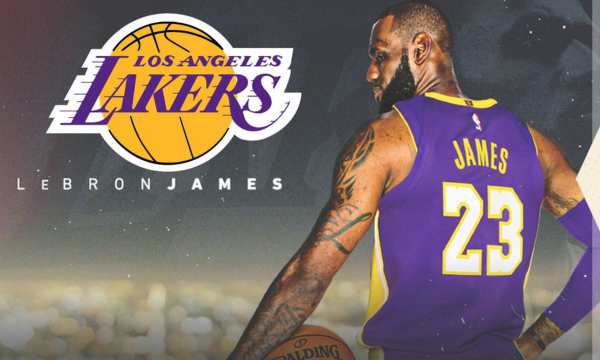Learn More About NCAA Basketball
NCAA basketball represents the pinnacle of American college sports, combining talent, tradition, and passion across the country.
Anúncios
For millions of fans, following college games is as important as watching the NBA.
The atmosphere in the arenas, the historic rivalries, and the energy of the fans create a unique spectacle.
The young talents we see today in NCAA basketball will be the future stars of professional basketball.
Get ready to learn more about American college basketball and discover why so many people are passionate about the NCAA.
What is NCAA Basketball?
NCAA basketball is the main college basketball competition in the United States, organized by the National Collegiate Athletic Association.
Founded in 1939, the competition brings together over 350 universities divided into three main divisions.
Each division has its own championship, with Division I being the most prestigious and televised.
Thousands of student-athletes participate in the competition annually, representing their universities in games that attract crowds to the arenas.
The NCAA basketball system includes both men’s and women’s teams, each with its own competitive structure.
For many players, participating in the NCAA represents the chance to obtain a free college education through athletic scholarships.
How the Season Works: From Tournaments to Playoffs
The NCAA basketball season officially begins in November with non-conference games, allowing teams to face opponents from different regions.
During this initial phase, several universities participate in tournaments such as the Maui Invitational and Battle 4 Atlantis.
Starting in December, conference games begin, where teams face rivals from their own geographic region.
The NCAA competition is organized into 32 conferences, such as the ACC, Big Ten, and SEC, each with its own identity.
Conference games are crucial for determining the teams’ positioning for the final tournament.
After approximately 30 games in the regular season, the conferences hold their own knockout tournaments in March.
The champions of these tournaments earn automatic qualification for the NCAA Tournament, popularly known as March Madness.
Additionally, a committee selects additional teams to complete the 68-team bracket in the men’s tournament.
This entire system guarantees months of excitement culminating in the spectacular March Madness.
What Are the NCAA Rules for Athletes?
NCAA basketball rules are strict to maintain the spirit of college sports. Athletes must maintain good grades to remain eligible for competitions.
The competition requires student-athletes to be enrolled full-time and make academic progress. Each player is allowed five years to complete four seasons of competition.
Transfers between universities have specific rules, which were recently relaxed with the creation of the “transfer portal.”
A historic change occurred in 2021 when NCAA basketball began allowing athletes to profit from their name, image, and likeness (NIL). Before that, any financial compensation could result in the athlete losing eligibility.
In terms of gameplay, the NCAA has some differences compared to the NBA: games have two 20-minute halves, and the shot clock is 30 seconds.
The academic calendar also imposes limitations on the number of practice hours allowed per week.

Kentuckey-and-Duke-in-the-NCAA-in-2019-(Source-Google)
How Recruitment Works for Universities
Recruitment in NCAA basketball is a competitive process that begins when athletes are still in high school.
College coaches travel across the country attending youth tournaments and camps to identify promising talents.
The best high school players receive star ratings (from 1 to 5) from specialized recruitment sites like ESPN and 247Sports.
An official NCAA offer includes a scholarship that covers tuition, housing, meals, and school supplies.
“National Signing Day” marks the period when athletes can officially sign their letters of intent with universities.
Elite NCAA basketball programs like Duke, Kentucky, and North Carolina compete for the same talented five-star recruits annually.
Universities That Are Part of the NCAA
NCAA basketball encompasses an impressive number of educational institutions across the United States.
In Division I, we find large universities like UCLA, Duke, Kentucky, and North Carolina, true powerhouses of college basketball.
Big Ten conference schools like Michigan, Ohio State, and Indiana have some of the largest arenas in the NCAA, accommodating over 15,000 spectators.
The Ivy League, composed of elite universities like Harvard and Princeton, also competes in NCAA basketball, although with fewer athletic resources.
Historically black colleges and universities (HBCUs) like Howard and Grambling State represent an important tradition in the NCAA.
Small schools like Gonzaga and Butler have proven that it’s possible to build elite programs in the NCAA even without the resources of large universities.
On the West Coast, the Pac-12 Conference includes powerhouses like Arizona and USC, while in the South, the SEC houses schools like Kentucky and Florida.
The diversity of institutions creates a unique environment where small schools can occasionally defeat sports giants, especially during March Madness.
What Are the Most Traditional Teams in NCAA Basketball?
Tradition in NCAA basketball is built through decades of excellence and memorable achievements.
Kentucky leads with eight national championships, establishing itself as a true dynasty in the NCAA.
North Carolina and UCLA follow closely, with programs that have produced numerous NBA players like Michael Jordan and Kareem Abdul-Jabbar.
Duke transformed into a powerhouse under the legendary coach Mike Krzyzewski, winning five NCAA titles between 1991 and 2015.
Kansas holds the record for consecutive seasons qualifying for the NCAA tournament, demonstrating impressive consistency.
Syracuse and its traditional zone defense are nationally recognized, as is the intense rivalry with Georgetown.
The University of Connecticut dominates not only in men’s NCAA basketball but also has the most successful women’s program in history.
These institutions not only win games but cultivate distinct cultures that define the identity of NCAA basketball for millions of fans.

UConn-wins-the-NCAA-in-2023-(Source-Google)
How Teams Are Ranked: Understanding the Rankings
The ranking system in NCAA basketball is fundamental for determining which teams will participate in the final tournament.
Wins against well-ranked teams are worth more, especially if achieved on the road.
Efficiency metrics developed by Ken Pomeroy have become influential in NCAA basketball analysis, evaluating teams beyond simple results.
NCAA programs seek to build challenging schedules that impress the selection committee.
During “Selection Sunday,” the committee reveals the 68 selected teams and their positions in the bracket.
Teams receive “seeds” (rankings) from 1 to 16 in each region, with the best programs occupying the highest positions.
This ranking is crucial as it determines the path each team will face until the NCAA Final Four.
Differences Between NCAA and NBA
The NCAA and the NBA represent different levels of the same sport, with significant differences in rules and atmosphere.
While the NBA uses four 12-minute quarters, the NCAA adopts two 20-minute halves. The shot clock also differs: 24 seconds in the NBA versus 30 seconds in the NCAA.
The three-point line in the NCAA is positioned closer to the basket compared to the NBA standard. The rebounding distance in the NCAA is shorter after free throws, creating different dynamics in these plays.
College players often execute more structured offenses, while the NBA favors isolations and pick-and-rolls.
The atmosphere in the NCAA is known for the enthusiasm of student fans, creating unique environments in each arena.
Coaches in the NCAA exert greater control over the style of play, while in the NBA, stars have more creative freedom.
The NCAA season is shorter, with approximately 35 games, compared to the NBA’s 82-game regular season.
Financially, NCAA players receive scholarships and can now profit from their image, but without the million-dollar contracts seen in the NBA.
The Excitement of March Madness: The Most Anticipated Tournament
March Madness is the pinnacle of the NCAA season, bringing together 68 teams in a unique knockout format that captures national attention.
During three electrifying weeks, NCAA basketball dominates sports conversations with games that define careers and legacies.
The famous “upsets,” where low-seeded teams defeat favorites, are the essence of the tournament, such as when UMBC (16th seed) defeated Virginia (1st seed) in 2018.
The first round, nicknamed the “First Four,” expands the traditional NCAA format to include more teams in the celebration.
The Final Four represents the culmination of NCAA basketball, bringing together the four finalists in a football stadium adapted for basketball.
The “One Shining Moment” after the final captures the most exciting moments of the tournament in a traditional NCAA montage.
Conclusion
NCAA basketball represents much more than simple college games – it is a tradition that unites generations, shapes athletes, and creates unforgettable memories.
The balance between elite competition and education makes the NCAA a unique phenomenon in the sports world.
To follow closely, we recommend watching the entire season, from non-conference games to the peak of March Madness.
We hope this article has clarified your doubts and increased your appreciation for the fascinating world of American college basketball.
FAQ
How can a foreign player participate in NCAA basketball?
What does “bracketology” mean in NCAA basketball?
Can NCAA basketball players receive money?
What is the difference between Division I, II, and III in NCAA basketball?
 8 College Basketball Dynasties That Dominated the NCAA
8 College Basketball Dynasties That Dominated the NCAA
In college basketball, some teams were born to dominate. Discover the teams that made history in sports! Anúncios College basketball is one of the biggest sports […]
Keep reading Michael Jordan: Learn All About the Court Legend
Michael Jordan: Learn All About the Court Legend
The journey of Michael Jordan is a lesson in perseverance, talent, and unwavering determination. Anúncios His impressive leaps have become a trademark that transcends the sport. […]
Keep reading LeBron James: Curiosities About the King of the Court
LeBron James: Curiosities About the King of the Court
Considered one of the greatest athletes of all time, LeBron James has revolutionized the way we see modern basketball. Anúncios His story inspires millions of fans […]
Keep reading